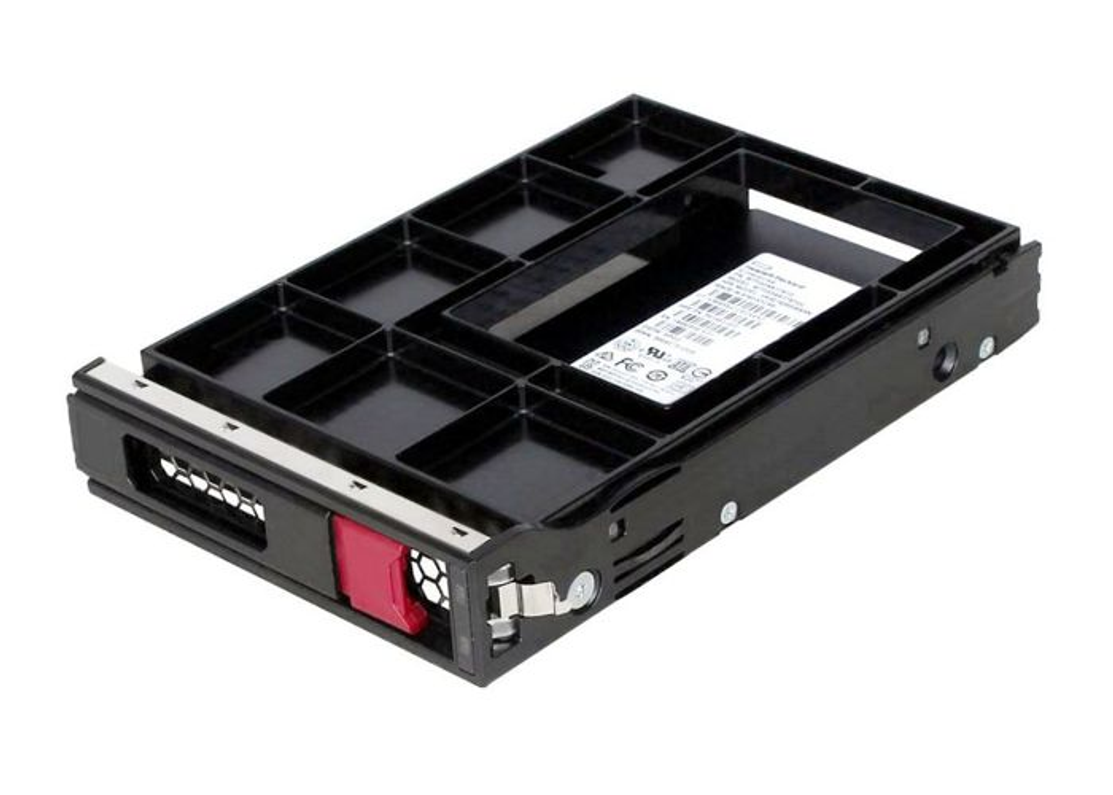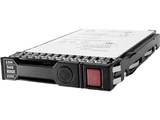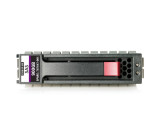HPE Digitally Signed SATA-6G LPC Mixed Use SSDs: Optimized Storage Solutions for Gen10 ProLiant Servers
In the ever-evolving field of enterprise IT infrastructure, the demand for reliable, efficient, and high-performing storage solutions is critical. HPE’s digitally signed SATA-6G LPC Mixed Use SSDs for Gen10 ProLiant servers are a response to this need, delivering optimized performance, security, and resilience for a wide range of enterprise workloads. This article covers an overview of HPE's Mixed Use SSDs, their benefits, and why they’re a solid choice for data-intensive environments.
Key Features of HPE Digitally Signed SATA-6G LPC Mixed Use SSDs
HPE (Hewlett Packard Enterprise) designed the digitally signed SATA-6G LPC Mixed Use SSDs for Gen10 ProLiant servers to address the needs of mid-level read/write applications. These SSDs are crafted specifically for environments that need both high performance and durability. Here are some standout features:
1. Digitally Signed Firmware : -
Each HPE SSD includes digitally signed firmware to ensure secure data access and integrity. This feature adds an additional security layer, protecting against unauthorized changes and data breaches. HPE’s commitment to digital security helps ensure a secure storage environment, particularly crucial in enterprise setups handling sensitive data.
2. SATA-6G Interface : -
With the SATA-6G (6 Gb/s) interface, these SSDs are designed for high-speed data transfer. While the SATA interface is generally slower than NVMe, its robust compatibility and cost-effectiveness make it ideal for various mid-range workloads without compromising performance. The 6G designation indicates that this SSD can handle up to 6 Gb/s transfer speeds, suitable for a broad spectrum of applications.
3. Low Profile Carrier (LPC) : -
The LPC design ensures a compact and efficient form factor, helping maintain a streamlined configuration within Gen10 ProLiant servers. This low-profile design contributes to airflow efficiency and maximizes space, allowing enterprises to scale their storage without adding bulk.
4. Mixed Use Optimization : -
HPE’s Mixed Use SSDs are optimized for a balance of read and write operations, making them ideal for applications with mixed workloads like databases, VMs, and transactional systems. They offer a balance between read-intensive and write-intensive storage needs, providing durability for repeated write cycles without compromising read speeds.
Benefits of Using HPE Digitally Signed SATA-6G LPC Mixed Use SSDs in Gen10 ProLiant Servers
HPE Gen10 ProLiant servers are known for their robust performance, security features, and scalability options, and HPE’s Mixed Use SSDs complement these characteristics perfectly. Here are some benefits of integrating these SSDs into a Gen10 ProLiant server environment:
1. Enhanced Security : -
Digitally signed firmware enhances security by authenticating each drive. This prevents unauthorized firmware modifications, offering peace of mind to enterprises operating in highly regulated industries.
2. High Performance with Cost Efficiency : -
The SATA-6G interface delivers reliable speeds, suitable for various workloads without the higher costs associated with NVMe drives. This balance makes these SSDs an excellent choice for enterprises seeking high performance at a more accessible price point.
3. Balanced Durability and Performance for Mixed Workloads : -
Designed for mixed-use cases, these SSDs offer endurance levels that can handle frequent data write cycles. This makes them suitable for virtualization, big data, cloud infrastructure, and more.
4. Improved Reliability and Lower Latency : -
Compared to HDDs, SSDs generally offer lower latency, allowing faster access to stored data. This benefit improves application performance and the overall responsiveness of the system, which is critical for enterprise environments with high data demands.
5. Energy Efficiency : -
HPE’s LPC Mixed Use SSDs consume less power compared to traditional HDDs, making them energy-efficient and cost-effective over the long run. The low power consumption also contributes to reduced heat output, thus enhancing overall system stability.
Why Choose HPE Mixed Use SSDs for Your Gen10 ProLiant Servers?
HPE’s Mixed Use SSDs for Gen10 servers come with several value-adds that make them a strong contender in the market for enterprise-grade storage solutions. Their digital signatures and security features, coupled with balanced performance for mixed workloads, make them ideal for businesses seeking both performance and durability.
These SSDs are particularly suited for environments that need consistent, reliable storage that can handle a mix of read and write operations. Whether for transactional applications, databases, or VMs, these drives provide the necessary endurance without excessive cost or energy consumption, making them a versatile choice for mid-range storage needs.
Conclusion
HPE’s digitally signed SATA-6G LPC Mixed Use SSDs represent a strategic choice for enterprises utilizing Gen10 ProLiant servers. Their balance of performance, endurance, and security makes them well-suited for a range of applications, from databases to virtual environments. By combining secure, digitally signed firmware with efficient storage capabilities, these SSDs empower enterprises to achieve optimal server performance while safeguarding critical data. As part of a Gen10 ProLiant setup, they help ensure your organization’s infrastructure remains resilient, efficient, and future-ready.
Recent Posts
-
Powering Enterprise Workloads: HPE 900GB 15K RPM SAS-12Gbps Smart Carrier Drive for ProLiant Gen9 & Gen10
In today’s demanding enterprise IT environments, businesses require high-performance, reliable …Mar 3rd 2025 -
Unleashing Enterprise Power: HPE 900GB 10K RPM SAS-12Gbps HDD for High-Performance Storage
In enterprise storage solutions, reliability, performance, and scalability are crucial factors. The …Mar 2nd 2025 -
Power, Speed, and Reliability: The HPE 600GB 15K RPM SAS Drive for Enterprise-Grade Storage
Introduction In today’s fast-paced digital world, businesses require reliable, high-speed, and …Mar 1st 2025




